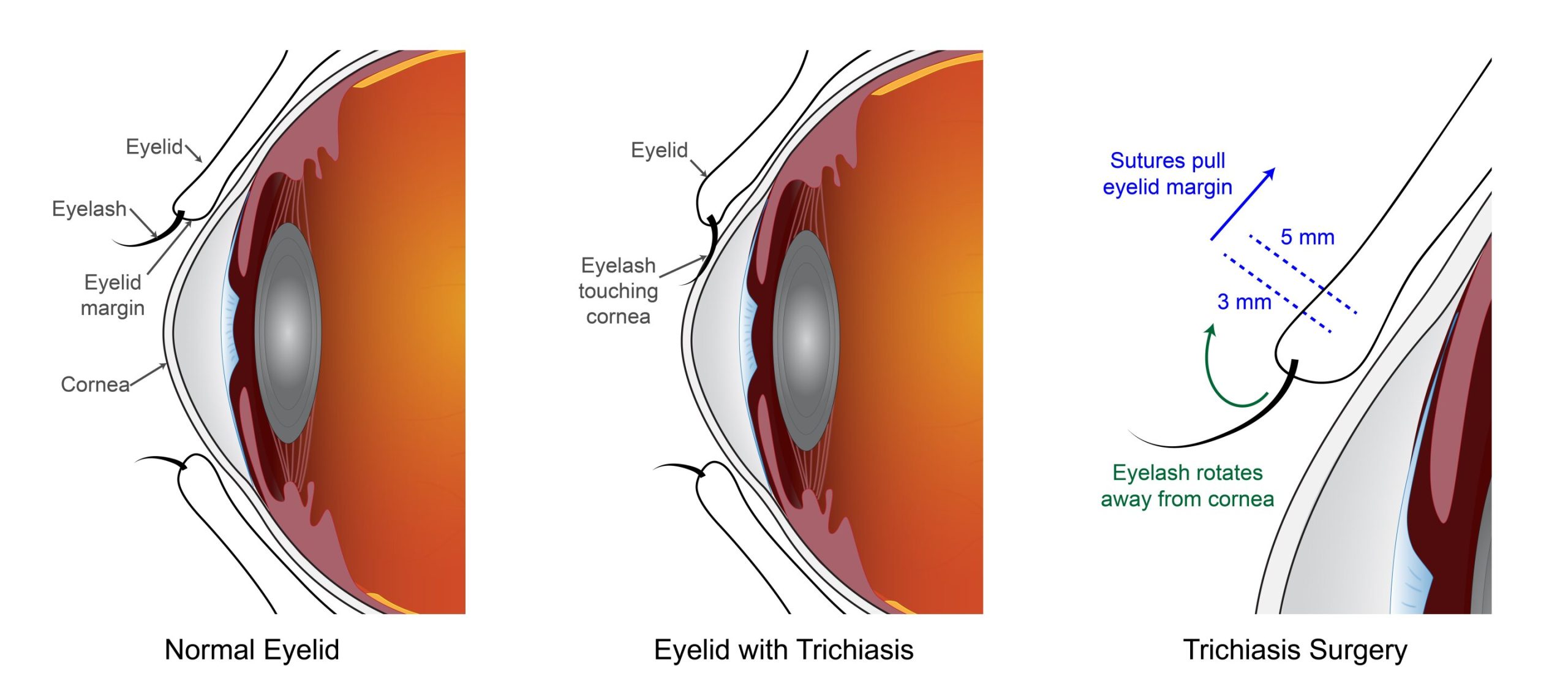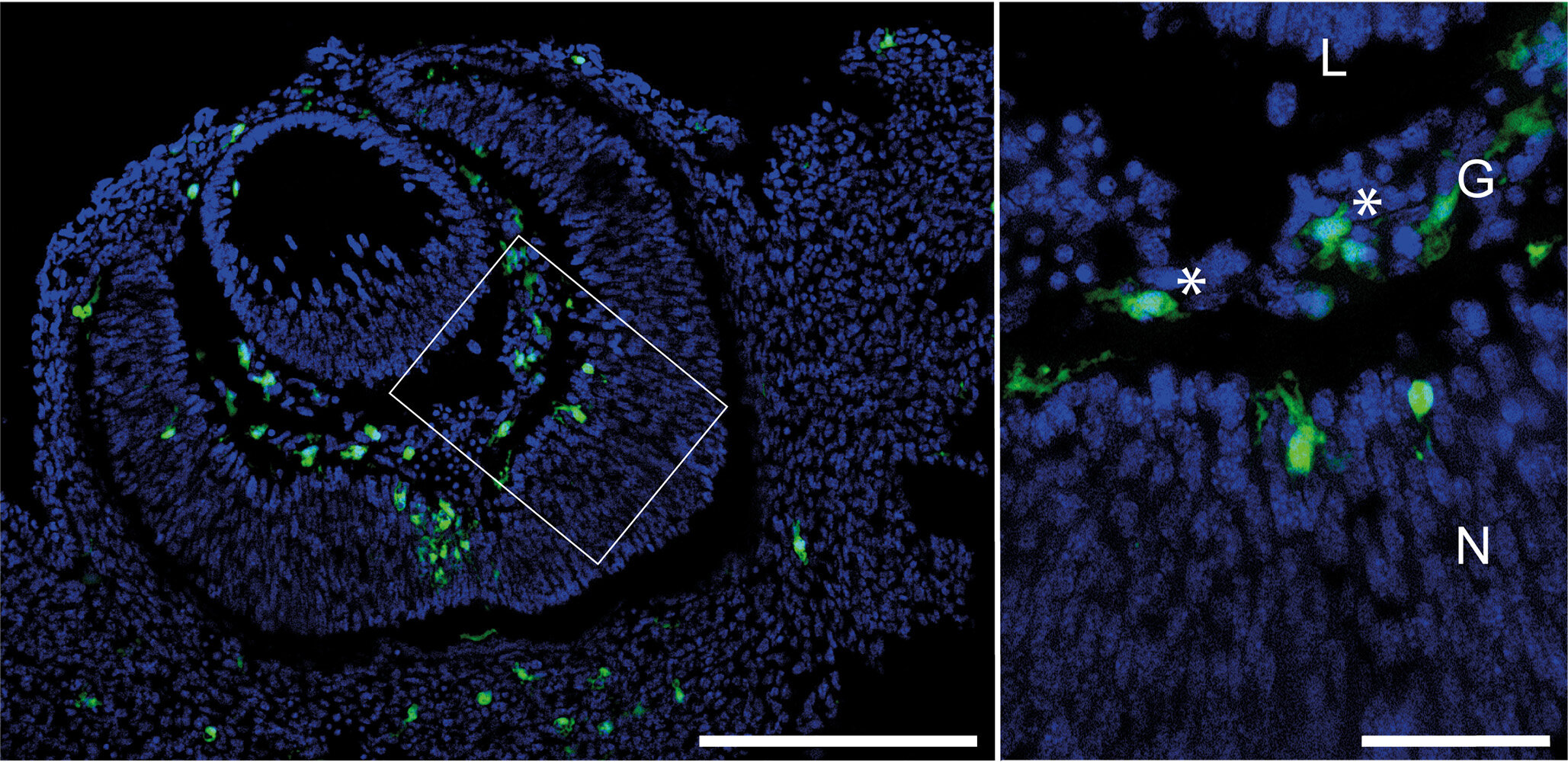
Trachomatous trichiasis, a potentially blinding condition where inward-turned eyelashes scratch the front of the eye, can successfully be treated by either of the two most common types of eyelid surgery, according to findings from a large comparison trial. In light of previous, smaller studies, which suggested that one of the commonly used surgery types had poorer outcomes, this study provides reassurance that either technique can treat the condition.
The study, “The impact of modified incision height and surgical procedure on trichiasis surgery outcomes: Results of the Maximizing Trichiasis Surgery Success (MTSS) Randomized Trial,” is published in PLOS Neglected Tropical Diseases.
“Some studies have reported post-operative trichiasis rates of 30% or higher for patients with trachomatous trichiasis following surgery, and repeat surgeries are more difficult,” said Emily Gower, Ph.D., University of North Carolina at Chapel Hill.
“This trial sought to determine if we could decrease the risk of post-operative trichiasis by modifying the surgical procedure. We found that existing approaches result in better outcomes.”
Trachomatous trichiasis affects approximately 1.7 million people worldwide, mostly in poor and rural areas of Africa. The condition arises after repeated or chronic eye infections with the bacteria Chlamydia trachomatis, which is spread by person-to-person contact.
Trachoma is very common in hot, dry areas of the world, and repeat infections can eventually lead to scarring and malformation of the eyelid. This malformation causes the edge of the eyelid to draw inward, so that eyelashes scratch the eye. If left untreated, trichiasis can result in corneal clouding, and eventually blindness.
The most common and effective treatment for trichiasis is surgery to correct the in-turning of the eyelid, which typically is performed in one of two different ways. A few smaller studies indicated that one of the surgery methods, posterior lamellar tarsal rotation (PLTR), might be more effective, so some programs in Africa began retraining surgeons to perform that method.
Additionally, previous analysis of eyelids treated with the other surgery, bilamellar tarsal rotation (BLTR), suggested that placing the surgical incision slightly further from the edge of the eyelid (5 millimeters above the lid margin instead of 3mm) might lead to fewer recurrences, but this change had not previously been tested.
The current study directly compared these three surgery approaches and evaluated the risk of post-operative trichiasis.
The study, which took place in southern Ethiopia, enrolled 4,914 patients with trichiasis in one or both eyes (6,940 eligible eyes). The participants were randomized to receive BLTR at 3mm incision height, BLTR at 5mm incision height, or PLTR. Researchers rechecked the patients for post-operative trichiasis at six weeks and again at 12–18 months. On average, approximately 17% of eyelids had post-operative trichiasis.
There was no difference in risk of post-operative trichiasis between the two methods with a 3mm incision height, while those who received the 5mm incision height BLTR were significantly more likely to have post-operative trichiasis. The results indicate that the current standard surgeries—either method at 3mm—are better options for trichiasis treatment than the 5mm method.
More information:
Emily W. Gower et al, The impact of modified incision height and surgical procedure on trichiasis surgery outcomes: Results of the Maximizing Trichiasis Surgery Success (MTSS) Randomized Trial, PLoS Neglected Tropical Diseases (2024). DOI: 10.1371/journal.pntd.0012034. journals.plos.org/plosntds/art … journal.pntd.0012034
Citation:
Study finds two common surgeries equally effective for treating blinding condition of the eyelid (2024, September 17)
retrieved 21 September 2024
from https://medicalxpress.com/news/2024-09-common-surgeries-equally-effective-condition.html
This document is subject to copyright. Apart from any fair dealing for the purpose of private study or research, no
part may be reproduced without the written permission. The content is provided for information purposes only.



